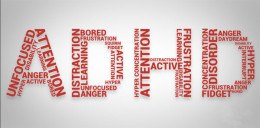Claudia was at her wit’s end. Her son, Andy, just wouldn’t sit still. He’d start one thing, then shift onto another; he couldn’t really seem to focus on anything, couldn’t settle down. He’d been like that since he was a toddler: running around, getting into everything, climbing on the furniture, taking off unexpectedly. But she always thought he’d outgrow it. When his report cards starting mentioning disruptive behavior, Claudia took Andy in to see the pediatrician, who recommended an evaluation for attention deficit hyperactivity disorder (ADHD).
ADHD is one of the most common neurodevelopmental disorders, by some accounts reaching as high as 10% of all school-age children. Although most commonly identified in children, ADHD can be diagnosed in adults as well. ADHD seems to affect boys and men more than girls and women.
Both kids and adults with ADHD share similar behavior patterns. They are impulsive: they act without thinking. They are hyperactive: they have difficulty sitting still. And they have trouble focusing: both shutting out distractions and being attentive to the matter at hand. Symptoms can continue into adulthood.
Most children have trouble settling down and focusing sometimes. Many kids enjoy rowdy behavior, but can pay attention when necessary. Boisterousness and distractibility, by themselves, are not definite signs of ADHD. But if the behavior problems are consistent, it may be worth looking into. Kids with ADHD can’t just switch gears and apply themselves. Their brains have chemical and biological differences from neurotypical brains.
ADHD will affect each person differently, but there are three main subtypes. Some fall into the “mostly hyperactive/impulsive” category, some fall into the “mostly inattentive” subcategory, and most are “mixed or combined” of the two above.
Kids with ADHD might be daydreamers. They might be the kind of kids who are always squirming and fidgeting, or the kid who’s always losing something. They might be the risk-taker, someone who just can’t resist temptation, even when they should know better. They might talk too much, or too loud. They might make careless mistakes, have trouble following instructions. They might be the trouble-maker, the one who can’t take turns, can’t get along.
There is no single test to diagnose ADHD. A similar set of symptoms could be the result of anxiety, depression, or some learning disabilities. The criteria for diagnosing ADHD include items pertaining to inattention, hyperactivity and impulsivity. In addition, the behaviors must be present in several settings, and the behaviors must interfere with social, school or work. You must visit a trained mental health professional in order to correctly diagnose ADHD.
Although living with ADHD can be challenging, it can be successfully treated with a combination of medication and behavioral therapy. Ask your health care professional for more information.
